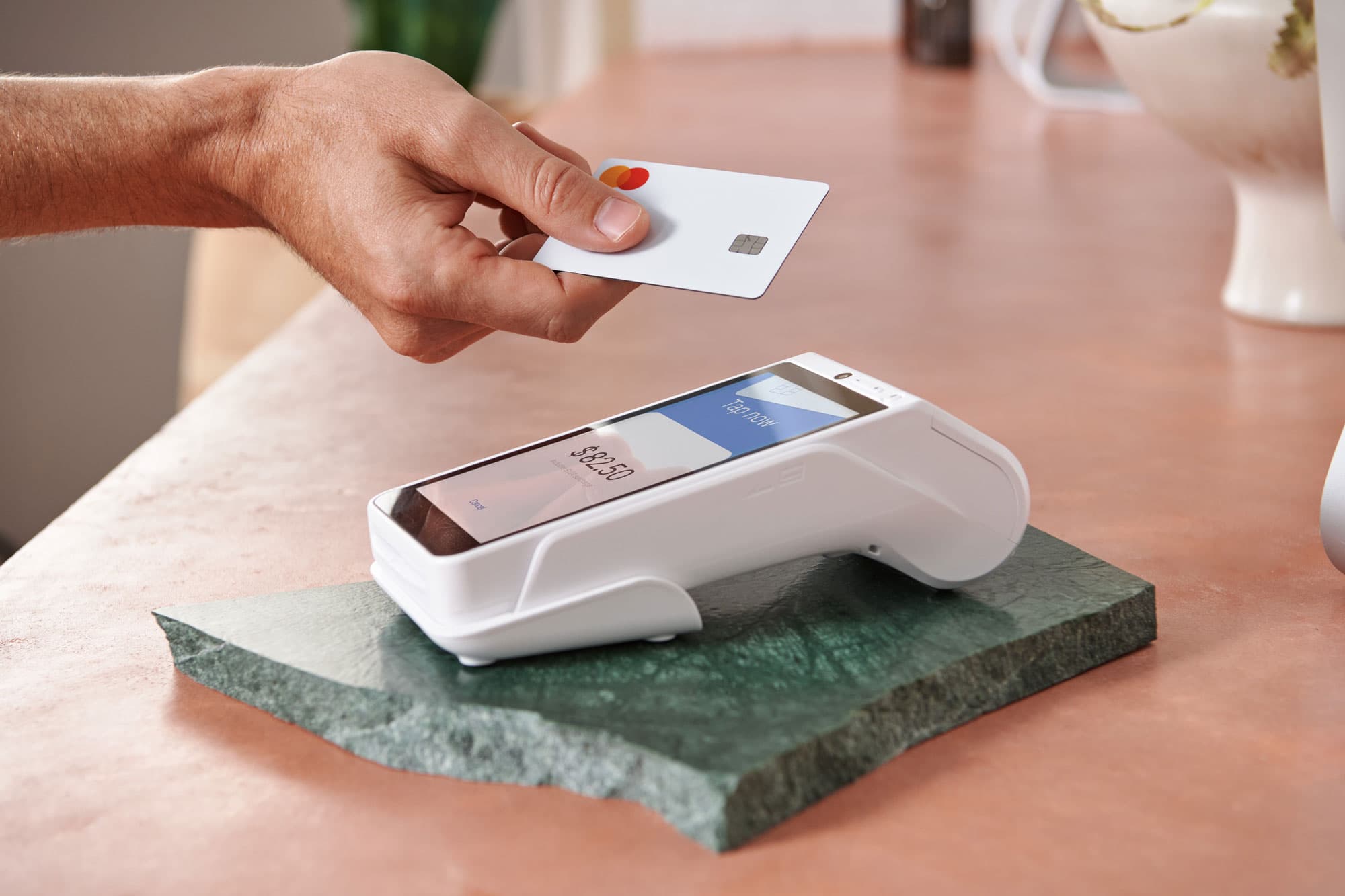
- Business Growth & Optimisation
How to Start a Business in 10 Steps
Follow our small business checklist to help get your new idea off the ground. If you’ve decided to start your own business, it’s likely you’re feeling as excited as you are nervous.
Running your own business is an extremely rewarding experience — choosing your own hours, following your passion, and having the freedom to express your creativity are just some of the many benefits. But nothing comes easy, which is why it’s important to equip yourself with as much knowledge as you can before launch day. Being prepared will mitigate the challenges that are part and parcel of entrepreneurship, and will allow you to make the best decisions to set your business on the right trajectory. Coming up with a profitable idea, understanding your target market, and sussing out the competition are all essential first steps, but there’s more to it than that. To give your business the best chance of success, we’ve summarised the ten important steps every Australian business owner needs to take prior to launching.
The ultimate business checklist for getting started in Australia
1. Come up with an idea
All the most successful businesses solve a problem. No coffee shop close to your local school? That’s a problem for parents. No gluten-free salad dressings on the market? That’s a problem for celiacs. No sustainably-made dog collars? That’s a problem for eco-conscious pet owners. Your ability to fill a gap in the market better than anyone else will be the key to your business’s success. Remember that often, customers won’t even know a problem exists until you present them with the solution. If you’ve never heard of a Portuguese tart before it’s likely that you don’t know that a bakery specialising in Portuguese tarts is missing from your life. So, when searching for or refining your business idea, consider the following:
Does my business solve a problem?
Does my business improve upon the current product or service offering?
Is there an underserved demand for my product or service?
Does my product or service bring a new perspective to an existing industry?
If you answered yes to one or more of these questions, you’re off to a great start.
2. Research the competitive landscape
In order to gauge the size of the market you are entering, you’ll need to research the competition. Look for local competitors that sell the same, or similar, products or services. If there are many, you’re going to need to develop a unique value proposition, that is, an offering that sets you apart from the rest and gives customers a reason to visit your business over an established competitor that they know and trust. This research will allow you to identify gaps in the market and potential opportunities upon which you can capitalise. Additionally, it will help you to develop your own pricing strategy that is competitive and attractive to customers, and will give you an idea of the marketing tactics being used in your space. To stay up to date on the latest developments and announcements, join the mailing lists of your competitors, follow them on social media and set up Google alerts for business names or topics related to your industry.
3. Apply for an ABN and register for GST
While these steps won’t apply to every business, the majority of businesses operating in Australia will be required to apply for an Australian Business Number (ABN) and Goods and Services Tax (GST).
An ABN is a unique 11-digit identifier that is issued by the Australian Business Register (ABR) to businesses and organisations operating in Australia. It is free to apply and can be done through an online application or by submitting a paper form. It’s important to note that businesses are required to have an ABN before they can register for GST, claim business tax deductions, or access other government services and programs.
If your projected annual turnover exceeds $75,000 (or $150,000 for non-profit organisations), you will also need to register for GST. Once registered, businesses must charge GST on their goods and services sold, and remit this amount to the Australian Taxation Office (ATO) on a regular basis. The current rate of GST in Australia is 10%, which means that businesses must add 10% to the price of what they are selling.
4. Understand your legal requirements
At best, regulatory requirements are a headache. At worst, they’re a major roadblock. To ensure that you are across all your legal responsibilities and restrictions as a business, it is imperative that you check the Australian Business Licence and Information Service. This online service will help you find any licences, permits, and/or registrations you might need to operate legally in Australia. It may also be a good idea to check with your local council, as some restrictions may only apply to a very small area. For example, in some areas of Melbourne, you are able to roast your own coffee beans on-site, whereas in others, regulations will prevent you from doing so. If you’re ever unsure, it’s a good idea to seek expert legal advice. While it may cost you upfront, it will save you money and stress in the long run. Doing your research early will reduce the burden of compliance later on.
5. Find a name
Your business name needs to effectively communicate your brand identity, resonate with your target audience, and help your business stand out amongst the competition. What’s in a name you ask? All of the following.
Brand identity: Your business name should be unique, memorable, and reflect your brand identity. Consider what image or impression you want to convey to customers and make sure your name aligns with that vision.
Clarity and simplicity: Your business name should be easy to spell, pronounce, and remember. Avoid using complex or obscure words that may confuse or alienate potential customers. Conversely, it should not be so vague that it cannot be easily found when customers search it on Google.
Domain availability: Your business name should be available as a domain name so that you can create a website that matches your business name. Check for domain availability before finalising your business name.
Legal considerations: Make sure your business name is not already trademarked or being used by another business.
Scalability: Consider whether your business name will still be appropriate if your business expands or evolves over time. Avoid using a name that limits the potential growth or diversification of your business.
Industry relevance: Consider how your business name relates to your industry or niche. Your business name should be relevant to what you do and appeal to your target audience.
Cultural sensitivity: Be mindful of cultural and social sensitivities when selecting a business name. Avoid names that could be offensive or insensitive to certain groups of people.
6. Test your idea
Market research, surveys and feedback from small business communities are all valuable. Yet the best way to confirm your business idea is a good one is to start selling your product or service. Paying customers will always be the best source of feedback. A soft launch is a good way to see how people will react to a product before making it available to the greater public. Invite a small pool of people to test your offering. If possible, use the opportunity to take pre-orders and generate some initial funding to cover your first inventory. If you’re selling products such as homemade goods, clothing, homewares or coffees, consider renting a stall at your local market. It’s a cost-effective way to get your business out there and market your product without investing heavily. Additionally, having the opportunity to speak directly with customers lets you gain insight from them and allows you to spread the word about your upcoming opening. If you’re planning on running a service business, consider starting with a discounted trial. Make sure to ask your first customers for a testimonial that you can use in your initial advertisements on social media, or a review on Google My Business.
7. Write a business plan
Whether or not you are looking for investors, lenders or partners, writing a business plan is a highly valuable exercise for any budding business owner. Writing out a detailed overview will help you to articulate and refine your business idea, which will in turn help you to communicate it to anyone you’d like to get on board. It will be a very useful asset to have on hand, at least during the initial stages, as it will serve as a roadmap to keep you on track and to not lose sight of your objectives. It doesn’t matter if you haven’t got all the answers just yet, you can always review and change it later. The first iteration of your business plan should include the company's goals, strategies, and financial projections. While it might be daunting at first, going through each step will likely uncover questions or blind spots and will help you know which tasks to prioritise. Keep the plan manageable and succinct, as you may have to deviate and review it as your business grows. Click here for our step-by-step guide on how to write a business plan.
8. Decide on a legal structure
There are a number of ways to legally structure a business in Australia. Knowing the difference now will save you a lot of time and effort down the track as your legal structure impacts critical parts of your business — such as your personal liability and tax obligations. It can also be difficult to change later on. There are five main types of business structures to consider when setting up a new business.
Sole trader: an individual trading on their own.
Partnership: a business owned by two or more people who share profits and losses.
Company: a legal entity that is separate from its owners (shareholders).
Trust: an entity that holds property or assets for the benefit of others (beneficiaries).
Co-operative: a business owned and operated by its members, who share profits and decision-making authority and usually established for recreational, cultural, or charitable purposes.
Choosing the right legal structure for a business depends on factors such as the number of owners, liability protection, tax implications, and management structure. It is important to consult with a lawyer or accountant to determine which legal structure is best for your business.
9. Set up a business bank account and organise your finances
From tax compliance to accessing funding, planning investments and managing cash flow, there are countless reasons why every business owner needs to organise and streamline their finances from the get-go. It doesn’t have to be as complicated as most of the mainstream banks make it though. Zeller is an Australian provider that simplifies the process in all of the following areas:
Business Bank Account: Whether you’re at the very first stages of planning, or are about to launch, having a financial account specifically for your business transactions is essential. Thankfully, at Zeller, setting up a business bank account doesn’t require lining up at a bank branch and filling out reams of paperwork. A free Zeller Transaction Account can be set up online in a matter of minutes. From here, you can create as many Transaction Accounts as you need, for allocating money to different business locations, setting aside savings or assigning petty cash. Discover how the Zeller Transaction Account compares to the best business bank accounts in Australia.
Business Debit Card: From purchasing stock to paying bills, suppliers or employees; starting a business means spending money. So, naturally you’re going to need a debit card that is linked to the funds you’ve allocated to your business. Zeller Debit Card links to your Zeller Transaction Account and can be used to make purchases in-store or online, for any business-related expenses.
EFTPOS Terminal for In-Person Payments: If you’re planning a bricks-and-mortar shop front or mobile business, you’ll need a fast and easy solution for accepting card and contactless payments. Zeller EFTPOS machine is the next-generation solution for in-person payments that processes all cards — including American Express — at a single low rate, with no monthly rental fees. It can be integrated with point-of-sale systems and also offers you the ability to pass on the merchant fee to customers through surcharging. The Zeller Terminal ultimately gives business owners more flexibility and peace of mind knowing they won’t be stung with a hefty fee at the end of the month.
Invoicing Software for Online Payments: If you’re planning an online service business, you need to make it as easy as possible for customers to pay you. Zeller Invoices is a great way to get money into your business quickly, and hassle-free. When a customer pays your online invoice with Zeller, by simply using their credit card — no bank transfers necessary — the funds are settled into your Zeller Transaction Account nightly, 365 days a year (or into a third party bank account the next business day) so you can spend your money as you earn it.
Financial Tracking & Reporting System: At its most basic, this could be an Excel spreadsheet. But, as you’ll soon find out: business owners need to save time wherever possible. This starts with eliminating manual data entry. With a Zeller Transaction Account, all your transactions and expenses will be instantly synced to your Zeller Dashboard and Zeller Mobile App where you can track all the money coming in and going out, in real time. Being able to see the net balance of your funds over time allows you to quickly identify spending patterns and make informed business decisions: from rostering to inventory orders or when to push marketing. It will also allow you to calculate the length of your cash cycle, that is, the time it takes for your business to convert its spending (inventory, resources etc.) into cash inflows from sales.
Ready to get started with Zeller?
Learn more10. Market your business
To get your business noticed and draw in potential customers, you’re going to need to do some marketing. What strategies work is going to entirely depend on your product or service and your target market. Therefore, understanding your customer is going to be key in getting your business name in front of their eyeballs. There’s seemingly endless possibilities when it comes to marketing, but here are the major tactics you need to consider:
Social media marketing: Facebook, Instagram, Twitter, and LinkedIn are great places to start promoting your business and connecting with potential customers.
Content marketing: Creating and sharing valuable and informative content, such as blog posts or videos related to your product or service is a great way to demonstrate your expertise and attract customers.
Search engine optimisation (SEO): While a little technical, having a basic knowledge of SEO will help your website and content rank higher in search engine results pages.
Print marketing: This could include flyers, brochures, business cards, posters, billboards, direct mail, and newspaper or magazine advertisements.
Pay-per-click (PPC) advertising: This involves placing ads on search engines and social media platforms, and paying each time a user clicks on your ad.
Influencer marketing: Find influencers or partners in your industry who can help to promote your brand and products to their followers.
Local marketing: Target customers in your local area through tactics like local SEO, online directories, and community events.
Once your business is up and running and you have a pool of engaged customers, you can also try the following tactics:
Email marketing: If you have a subscriber base, send regular email newsletters and promotional messages to your subscribers to alert them to new products or special offers.
Referral marketing: Encourage your existing customers to refer their friends and family to your business in exchange for rewards or discounts.
Get started
We understand you’ve got a lot to think about. So, to make life easier for yourself, Zeller will help you out with everything finance and payments related. We’ve worked with thousands of businesses in industries spanning hospitality and retail, beauty, tourism, medical and everything in between. Our Sales Team loves speaking to new business owners to guide them through the weeds and help them get set up. Whether you’re ready to press “launch” or are still in the early stages of developing your idea, our team is always happy to answer any questions you may have. Contact Zeller Sales, or visit our website to learn more about how we can streamline your business.



